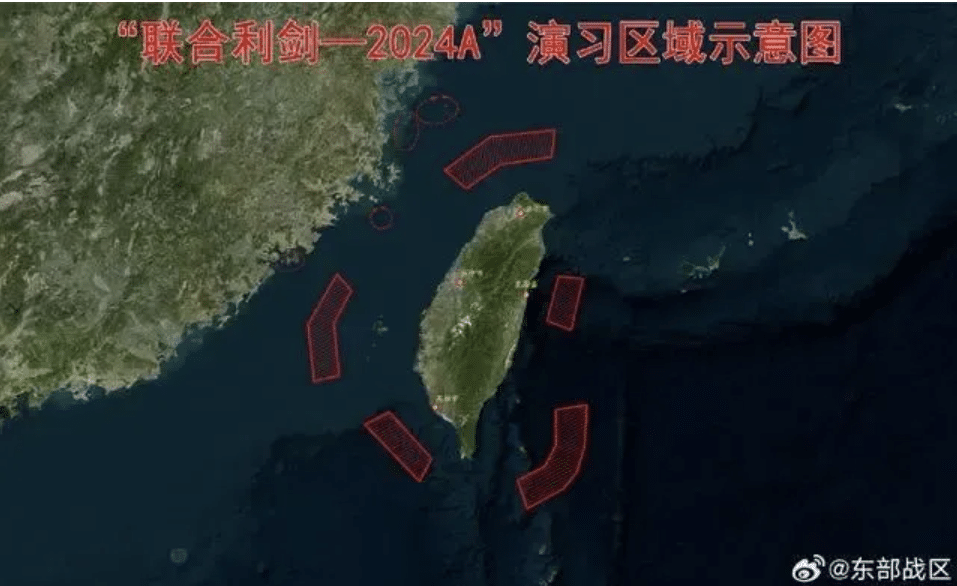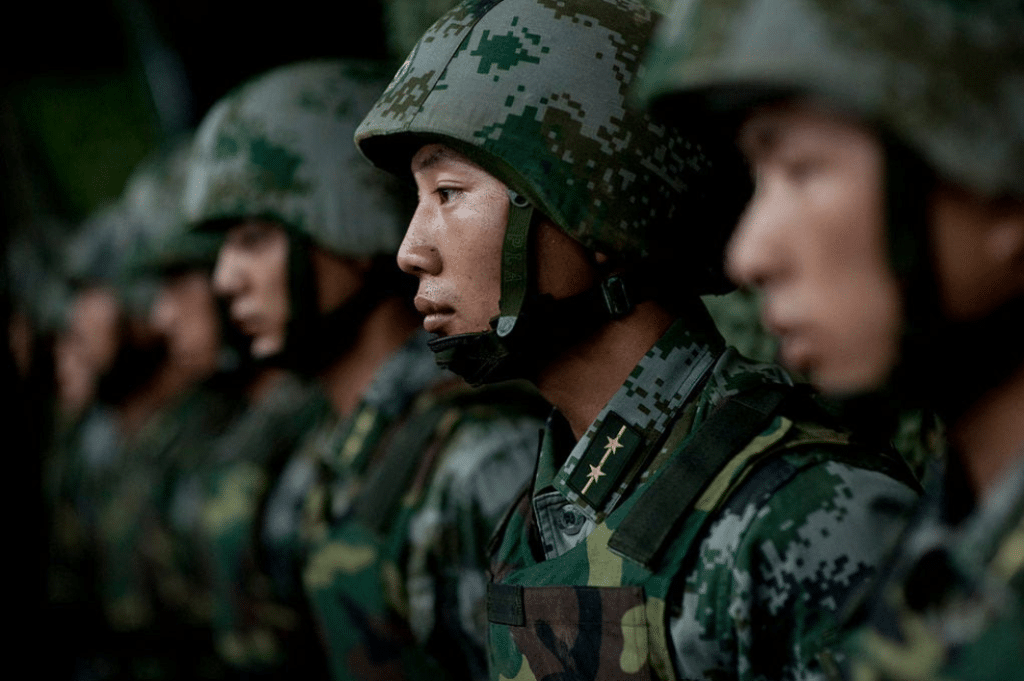President Trump’s Quiet Diplomacy Behind U.S.–China–Japan Phone Calls
Chinese Thirdspace & A Third Political Route w/ Jianmei Liu
- Interviews
 Miranda Wilson
Miranda Wilson- 05/20/2025
- 0
Jianmei Liu is chair professor of Chinese literature at the Hong Kong University of Science and Technology. She is the author of Zhuangzi and Modern Chinese Literature (2016) and Revolution Plus Love: Literary History, Women’s Bodies, and Thematic Repetition in Twentieth-Century Chinese Fiction (2003). This interview covers her most recent book: Chinese Thirdspace: The Paradox of Moderate Politics, 1946–2020 (2025).
Miranda Wilson: To begin, what inspired you to write Chinese Thirdspace? And, for readers who don’t know, what is the “Chinese Thirdspace”?
Jianmei Liu: The inspiration for Chinese Thirdspace came during the intense anti-government protests in Hong Kong in 2019. I observed a society sharply divided into two camps: those supporting China and those opposing it. As someone seeking a middle ground, I often felt bewildered and caught in the crossfire. This situation reminded me of past political turmoil in mainland China, especially during the Cultural Revolution, when many people felt pressured to choose a side with little room for alternatives. This binary thinking limits our ability to empathize with others whose views may differ from our own.
During my writing process, I drew inspiration from my father, Liu Zaifu, a distinguished literary critic and scholar, whose literary theories were very influential in China. After his exile to the United States due to his involvement in the Tiananmen Square Movement, he introduced the concept of Thirdspace in the late 1990s, presenting a perspective that diverges from that of Western theorists like Homi Bhabha and Edward Soja. My father’s vision of Thirdspace encapsulates the struggles of modern Chinese intellectuals, who have long been ensnared in a polarized dilemma—revolution versus anti-revolution, individual versus collective, Marxism versus anti-Marxism, leftist versus rightist, materialism versus idealism, modernity versus tradition, and East versus West. For over a century, these entrenched divisions have stifled the richness of diverse perspectives.
What is “Chinese Thirdspace”? I will use a paragraph in my book to answer this question:
“It is a survival space for an individual; a public sphere harboring heterogeneous ideas; a life philosophy that embraces tolerance and harmony; a third political route that balances freedom and equality; a pragmatic method mediating human disputes; a moderate heterotopia that is neither utopia nor dystopia; a unique location where linear progress and causality are replaced by a pervasive interrelatedness; or an aesthetic site resisting political controls and generating transmedia exploration.”
First and foremost, “Chinese Thirdspace” resonates with the intentions of Homi Bhabha and Edward Soja, aiming to transcend the restrictive either/or mentality in favor of a more inclusive “both/and also” logic. However, it is firmly rooted in the modern Chinese context, where revolutionary ideologies have long been entwined with the stark ultimatum of “either you die or I live.”
Additionally, it emphasizes tolerance, harmony, and balance by drawing on traditional Chinese philosophical wisdom, including the yin-yang dialectic, the spirits of Zhuangzi and Laozi, the middle way of Chan Buddhism, and the golden mean of Confucianism. Criticizing the dualism prevalent in the modern world, these Chinese philosophies find new expressions in Zhang Dongsun’s concept of “correlation logic,” which highlights the importance of complementary paradoxes, and in Li Zehou’s idea of “proper measure (du),” which seeks balance in practice.
Finally, “Chinese Thirdspace” aims to broaden the survival space for individuals in the face of extreme polarization by acknowledging the critical importance of the public sphere and embracing the concept of negative freedom. As defined by Isaiah Berlin, negative freedom embodies a non-coercive personal space that upholds a pluralism of inviolable human values— values that are often absent in the modern Chinese context, where collectivism has long dominated.
MW: What is the benefit of taking such an interdisciplinary approach to this topic? The book utilizes the disciplines of history, politics, film, and more.
JL: For me, Chinese Thirdspace refers to not only a critical political space between two opposing extremes, a philosophical space that emphasizes complementary paradoxes, a cultural space that highlights hybridity and dialogues, but also an imaginative and representational space brimming with transmedia innovations. Therefore, taking such an interdisciplinary approach to this topic can help me expand and enrich the foundations and ramifications of Chinese Thirdspace, examining various political, philosophical, and artistic pathways beyond polarization.
When I discussed various political standpoints of Thirdspace that a cohort of Chinese intellectuals chose, I touched upon the intellectual history and political thoughts. Although the spectrum of thought between the two extremes is broad and diversified, their views are most consonant with the value of harmony and the ideals of modern liberalism. Therefore, I also explore the philosophical wisdom embedded in those intellectuals’ political choices of Thirdspace. One of the important figures I discussed in my book, Zhang Dongsun, was extremely avant-garde in threading though interdisciplinary studies to construct Thirdspace. In terms of politics, he advocated a middle route between the left and the right; in philosophy, he built the plural epistemology; in cultural studies, he engaged in concerted cultural interactions between the West and China. As various disciplines constantly collude and negotiate with one another, he was able to grapple with the plurality of truth. As I explored how Thirdspace becomes a method in aesthetic creation, I emphasized the “in-between” space of transmediality in which a polyphonic effect goes beyond the limit of a single register of one artistic form. The Thirdspace between the two poles is infused with the mechanisms that create countless possibilities. A multitude of fresh ideas frequently emerge at the intersection of two things.
MW: How has the concept of the Chinese Thirdspace changed over time? The intellectuals you discuss in the book range from the Republican period to the postsocialist period.
JL: Indeed, the historical period explored in my book spans from the Republican era to the post-socialist age. In the face of varying geopolitical circumstances, individuals may adopt diverse political standpoints within the framework of Thirdspace. However, these intellectuals tended to adopt more moderate political tactics to reject totalistic conflicts and binary thinking. Even when confronted with similar political challenges during the same historical epoch, individuals often chose different paths to navigate their realities. This complexity has prompted me to discuss four key political standpoints of Thirdspace.
The first is the doctrine of accommodation, which emphasizes the importance of finding common ground for constructive negotiations and fostering balance among conflicting political factions. The second stance advocates for the value of neutrality in the public sphere, where a more moderate and pluralist view can thrive without prioritizing any one of a set of contrasting political views. The third stance emphasizes the importance of maintaining an unyielding independent individual position without succumbing to either faction, repudiating any form of authoritarian rule. Finally, the fourth standpoint embraces an apolitical and transcendent approach, which retreats from political conflicts to focus on individual artistic creation. However, these four distinct political stances are far from exhausting the versatile characteristics of Thirdspace that have existed in modern Chinese history. After all, the defining trait of Chinese Thirdspace lies in its all-encompassing essence, which embraces a rich diversity of forms and meanings.
MW: A common stereotype of Eastern and Western societies is that the East is more communal and the West is more individualistic. What would the scholars in your book have to say about that? Similarly, how did some of the scholars you cover reconcile some of the differences in Eastern and Western philosophy?
JL: I wholeheartedly agree with you. The notion that the East is inherently communal while the West is predominantly individualistic is a common stereotype that oversimplifies the complexity of cultural dynamics. In traditional Chinese culture, for instance, we have two distinct veins of cultural spirits: Confucianism, which emphasizes moral cultivation, social engagement, and communal and family relationships, and Daoism, which celebrates individuality, freedom, and a deep connection with nature.
During the national crisis of the late Qing period, many Chinese intellectuals became what C. T. Hsia describes as “obsessed with China,” a sentiment closely tied to Confucian ideals of social responsibility. This fervor led to a backlash against those seeking personal retreat; leftists and revolutionaries fervently criticized anyone who prioritized individual desires over the urgent call for national salvation. Consequently, modern Chinese intellectuals increasingly sacrificed their individuality and personal freedom for the greater causes of state, class, nation, or community.
However, the scholars in my book differ significantly from the leftists and revolutionaries of their time. They are not only deeply influenced by traditional Chinese philosophy, which transcends binary thinking, but they are also well-versed in Western liberal theories that emphasize individualistic values. These scholars distinguished themselves by prioritizing individual rights, contrasting sharply with many of their contemporaries who focused on nationhood and class struggle. By synthesizing diverse theories and practices, they illuminate the potential for traditional Chinese philosophical wisdom—such as yin-yang dialectics, Chan Buddhism, and the Confucian concept of the golden mean—to engage in a meaningful dialogue with the Euro-American liberal tradition.
MW: Your book talks about how modern China itself has been divided by opposing ideologies. Currently, the United States is similarly polarized. What lessons could Americans take from this book to combat such extreme political polarization?
JL: The extreme political polarization stems from overly simplistic moral judgments and the radical exclusion between two opposing factions. It reflects a complete rejection of rational middle ground, reconciliation, and compromise, along with a misguided aversion to objective analysis of complex circumstances. More critically, both sides are ensnared by an “either/or” mentality that limits their understanding of others.
The effectiveness of Chinese Thirdspace method lies in its ability to recover complementary paradoxes from Chinese philosophical sources. Traditional Western formal logic, as embodied by the philosophies of Aristotle, Descartes, and Isaac Newton, primarily operates on an either/or basis, which limits its capacity to grasp the complexities of paradox. In contrast, Chinese Thirdspace emphasizes the interdependent nature of opposites, seeking a both/and framework that transcends polarities. It is extremely important because it allows us to tolerate contradictory opinions and find a middle ground to properly grasp the plurality of truth and stimulate a diversity of ideas and knowledge for social benefit. To combat the extreme political polarization in both China and the U.S., we should employ the doctrine of accommodation to seek the middle ground, aiming for what political philosopher John Rawls calls an “overlapping consensus.” This concept describes how individuals with opposing religious and moral beliefs can still affirm a shared political principle of justice.
Another aspect of Chinese Thirdspace is the concept of “proper measure” (du), introduced by contemporary Chinese philosopher Li Zehou. This concept advocates for a moderate approach to handling various situations, emphasizing sound judgment to achieve harmonious balance. Du is relevant only within the context of practical experience, rejecting predetermined notions of universal laws or a priori truths. Instead, it underscores the art of maintaining equilibrium amid evolving circumstances.
The philosophical pathways of Chinese Thirdspace reflect core values centered on balance and harmony. However, this pursuit of balance should not be mistaken for a descent into unprincipled mediocrity or apathy. Rather, it represents a profound appreciation for the intricate complexities and diversity of human experience, challenging the so-called “one and absolute truth” championed by extreme factions.
MW: I was particularly interested in the final chapter about Chinese female writers’ construction of the Thirdspace. How were feminist movements connected to Thirdspace conceptualizations? Similarly, how did fiction by female writers uniquely contribute to the understanding of the Thirdspace?
JL: I believe that Chinese feminist movements are not closely associated with Thirdspace conceptualizations. In the 20 century, violent revolution and class struggle have been a central focus of criticism for scholars I discuss in my book. However, one positive outcome of the revolution in China is the elevation of women’s status. These women’s movements were largely orchestrated by the Chinese socialist government, which, to some extent, diminished femininity as it relates to bourgeois culture. The ostensibly neutral depiction of women in androgynous clothing during this socialist period, presented as a sign of equality between men and women, barely scratches the surface of what Thirdspace embodies. Ideologically, the majority of revolutionary women were still aligned with the either/or mindset, categorizing individuals as either revolutionary or anti-revolutionary.
In the final chapter, I examine three female writers—Chi Zijian from mainland China, Xi Xi from Hong Kong, and Chu Tien-hsin from Taiwan—during the post-socialist period to explore how their unique contributions enhance our understanding of Thirdspace. Each female writer, situated in different geopolitical contexts, confronted distinct historical circumstances and employed varied approaches to express their interpretations of Thirdspace. For example, Xi Xi’s evocative image-text narratives capture the unsettling anxieties of Hong Kong residents before the 1997 handover. Chi Zijian meticulously constructs a unique Thirdspace from the perspective of the borderland, illuminating the worldview of the Evenki people. In contrast, Chu Tien-hsin responds to Taiwan’s political polarization by following the ideas of Zhang Dongsun, seeking to establish a third political party to navigate the entrenched divisions of the political landscape.
MW: Some of your book talks about physical spaces as a Thirdspace, such as Hong Kong. How might a physical Thirdspace be different from a metaphorical Thirdspace? What do you think of the idea of Hong Kong as a Thirdspace? I am particularly interested in how the Thirdspace concept connects to the active protest environment in Hong Kong.
JL: Before the 2019 protests, Hong Kong could undoubtedly be characterized as a vibrant Thirdspace in a physical sense. It embodied the in-betweenness of Western and Chinese cultures and served as a dynamic hub for diverse and contrasting political groups. Jin Yong, the prominent figure I discussed, is an exemplar figure who successfully inaugurated Thirdspace based on value neutrality in the relatively free colonial Hong Kong of the 1960s. His journalistic empire, Ming Pao, carved out a nuanced middle ground between the Left and the Right, fostering more moderate and pluralistic views. This approach facilitated the emergence of an “overlapping consensus” rather than silencing all but a single set of substantive political or ethical perspectives. Jin Yong’s vision transcended the Cold War mentality, forging a bridge between opposing political factions.
However, in the aftermath of the 2019 protests, Hong Kong’s Thirdspace has been rapidly diminishing. The renowned Apple Daily, celebrated for its pro-democracy stance and fierce opposition to the CCP, was forced to shut down in 2021. Meanwhile, Ming Pao, which maintained its commitment to value neutrality, now struggles to uphold this ideal. While Hong Kong continues to function as a crossroads of Western and Chinese cultures, its public sphere—once a bastion of free speech—now faces significant constraints.
MW: How might we learn from the intellectuals in the book to combat today’s strict dichotomy of the United States versus China? How can we further investigate and build these spaces between or beyond competing ideological poles?
JL: Today’s stark division between the United States and China mirrors the tense atmosphere of the Cold War in the 1950s and 1960s. This situation reinforces a rigid either/or mentality, framing all contentious debates within the narrow confines of an us-versus-them dichotomy. In such a polarized political landscape, the need for a Thirdspace becomes increasingly urgent.
The intellectuals featured in the book advocate for a tolerant political attitude and embrace a multiplicity of values. Their quest for balance and harmony does not equate to a dismissal of justice; rather, it challenges the authoritarian forces that dictate standards of justice. In a politically charged environment where individuals often feel compelled to align with either the extreme left or the extreme right, or with either the United States or China, the concept of justice is frequently co-opted by political agendas.
In contrast, the pursuit of harmony promotes diversity and mitigates the dangers of radical opposition and exclusion. It opens up alternative pathways that transcend the binary divide between the United States and China. As my father, Liu Zaifu, eloquently stated, a broader Thirdspace fosters a healthier, more diverse, and freer society.
Miranda Wilson is a contributing editor for the U.S.-China Perception Monitor.
The views expressed in this article represent those of the author(s) and not those of The Carter Center.







